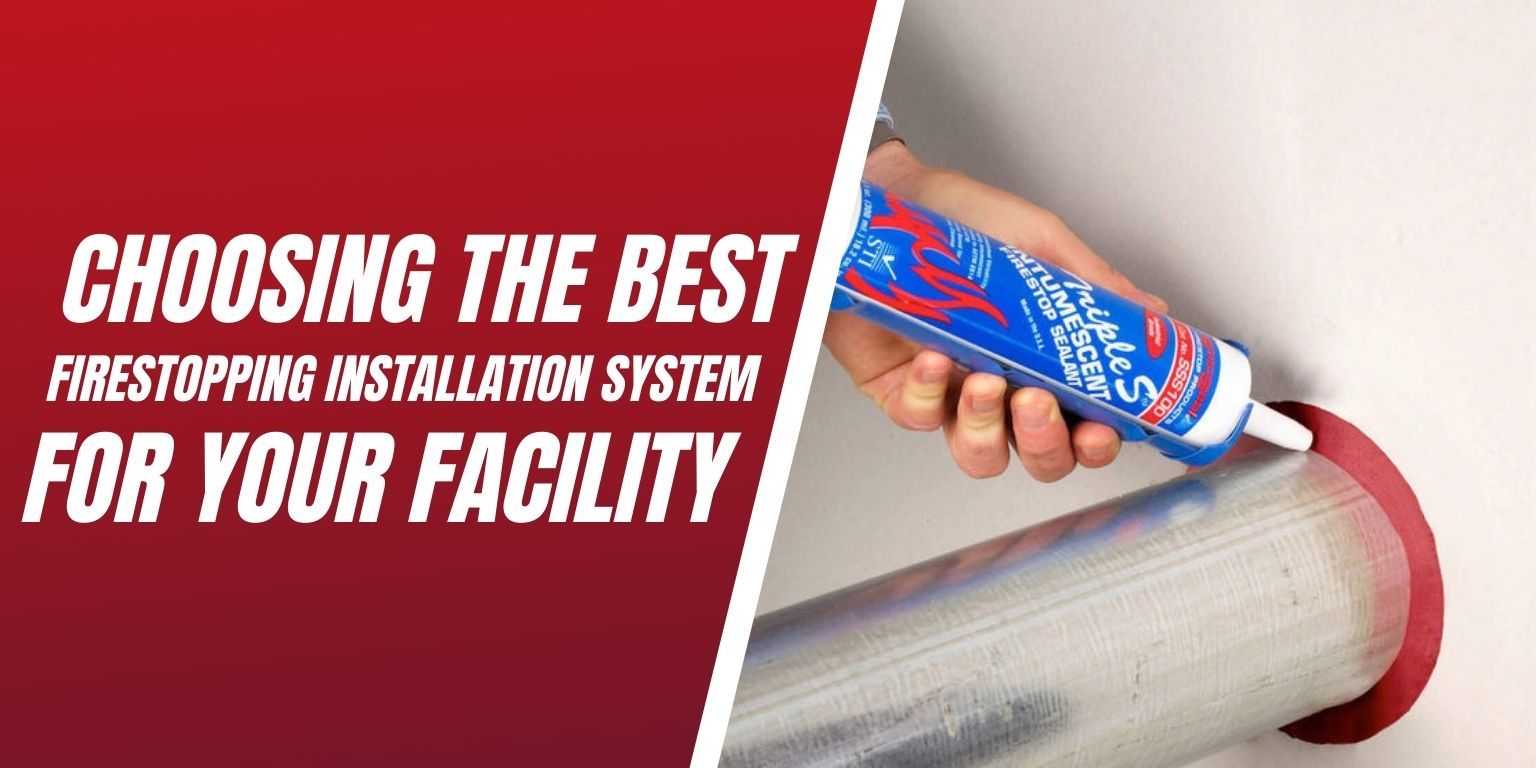
Whether you are a commercial, healthcare, industrial, or educational facility, it is critical make sure your building’s fire and life safety protection systems are regularly maintained. Compartmentalizing a facility is one of the best ways to help contain fire and smoke to its point of origin. One of the many ways to compartmentalize a facility is through the use of the building’s fire barriers. Unfortunately, fire-rated walls, floors, and ceilings can be damaged or altered by pipes and wires. Therefore, they must be maintained with the proper firestopping installation systems in order to help prevent the spread of fire and smoke.
Unfortunately, one of the most common firestopping issues is improperly installing firestop materials. If a building’s fire barriers have not been properly maintained, then fire and smoke will spread quickly causing unnecessary property damage as well as putting people’s lives in danger. To help, here is a list of the most common firestop systems and how they are used to help prevent the spread of fire and smoke.
According to the International Fire Code (IFC), the International Building Code (IBC) as well as the National Fire Protection Association (NFPA), require routine maintenance of a facility’s fire barrier walls. Each state walls should be properly repaired when damaged, altered, breached or penetrated. Any penetrations found should be repaired with approved methods capable of resisting the passage of smoke and fire.
So how can you be sure that your facility’s firestopping installation systems are correct? Here is a list of the most common firestop materials and how they are used to help prevent the spread of fire and smoke.
Firestopping Installation Systems
Sealants (Silicone, Latex, Intumescent) – are used in combustible penetrations, such as plastic piping, multiple cables, and sleeved piping.
Wrap Strips – are “rolls” or “strips” of intumescent material preformed in thick, thin, wide, or less wide strips. These strips expand 10 – 20 times their original state.
Putties – are hand applied intumescent sealants, which are great for hard-to-reach areas, but typically limited to metal piping and cables.
Pillows – are typically made from unexpanded vermiculite, mineral wool coated with an intumescent spray, and packaged in “bags/pillows”. These firestop products might be protected with stainless steel mesh, in some cases. They also must be stacked to the exact dimension shown in the tested and listed system drawings.
Firestop Mortars– are perlite, foam or vermiculite concrete mortars that expand upon curing to lock themselves in place.
Composite Sheets – 3’ x 4’ sheets of 28 ga. sheet metal, coated with intumescent material, laminated to aluminum foil and wire mesh. Used for large openings, these sheets are excellent for multiple penetrating item systems.
Firestop Bricks / Plugs – are made of urethane foam with graphite filler as the intumescing agent, and are used as blocks in a large and small opening.
Pre-Fabricated Kit Systems – are very detailed, with a special insert for each penetrating item. The multiple inserts are surrounded by a steel perimeter cabinet, compressed with steel assemblies. They are great systems for the client who wants both aesthetically pleasing and practical application.
Spray Products – are used to increase protection over sealant systems in joint systems such as “top of wall” and perimeter fire containment systems. These systems are applied very thin, to about 1/8” thick for an effective seal.
Making sure that you choose the best firestop system for your facility is critical to the integrity of your building as well as the safety of its occupants. Each firestop material is specifically designed to help prevent the spread of fire and smoke through fire barriers. When using the proper equipment in the proper areas, firestopping can help to seal off and stop the spread of fire and smoke in the event of an emergency.
Looking for firestopping installation services for your facility’s fire barriers? Our FM Approved firestop contractor can perform a Firestop installation in your building, which includes:
- Installation of UL classified firestop system based on SOC
- Preparation of submittal documents for AHJ submission
- Master report with digital documentation listing UL classified firestop system installed available via our web-based inspection software, LSS SiteSurveyor
For more information, Contact Us Here or call 888.675.4519

